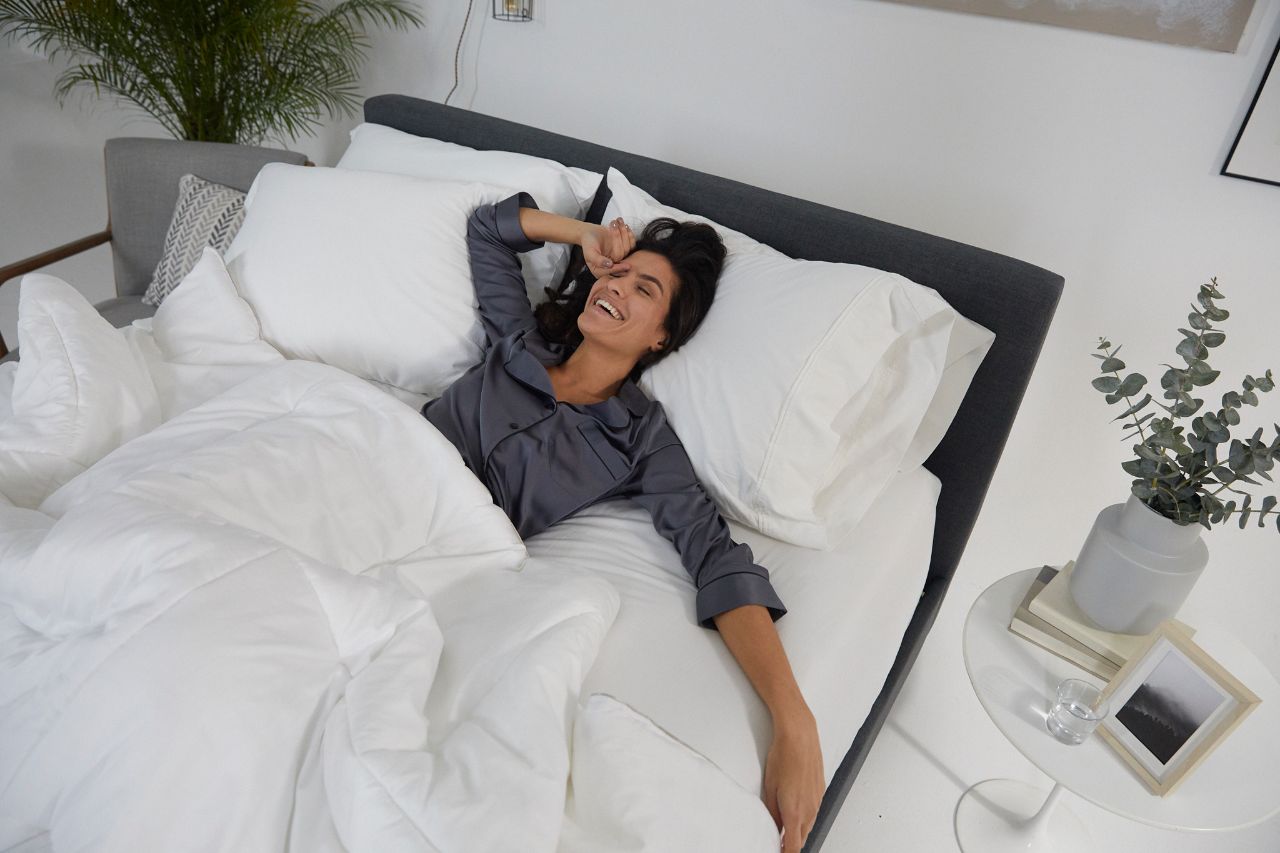Research from the University of Pennsylvania School of Medicine shows that about 25% of Americans live with acute insomnia each year. Acute insomnia means that you have difficulty sleeping for at least one night. It can also refer to trouble sleeping for several weeks. Luckily, there are natural relaxation techniques that you can use to get to sleep faster and improve the quality of your sleep.
Acute insomnia doesn’t cause many health problems. A bad night, however, can increase your risk of having an accident the following day. It’s not a good idea to drive while sleep deprived. People with chronic insomnia that lasts a month or longer face bigger health risks, including conditions like heart disease, high blood pressure, depression, and obesity.
Even occasional sleep problems, however, can affect your life by making it difficult to earn good grades, concentrate at work, and remain present in your relationships.
The next time you have problems sleeping, try these natural relaxation techniques. You’ll probably find that at least one of them works well for you.

The 4-7-8 Breathing Pattern Puts Your Body in Sleep Mode
Dr. Andrew Weil developed the 4-7-8 breathing pattern to relax the body and clear the mind. The natural relaxation technique is so simple that anyone can do it to get to sleep faster.
Start by putting the tip of your tongue behind your upper front teeth. Then:
-
Exhale as much air as you can.
-
Inhale through your nose while you count to four.
-
Hold your breath as you count to seven.
-
Exhale through your mouth while you count to eight.
Repeat the exercise until you relax and drift off to sleep.
You may not get amazing results the first time you try the 4-7-8 breathing pattern, but it should help you relax. The more you practice, the more effective the exercise gets.
Guided Imagery Leads You Down the Path to Sleepytime
Slow the hamster wheel in your head with guided imagery exercises. Studies show that guided imagery can help change a lot of behaviors, including sleep.
Most guided imagery recordings ask you to visualize relaxing, comfortable scenes that prepare your mind and body for sleep. For instance, a recording may ask you to imagine small weights pulling your eyelids down.
It’s okay if that option doesn’t sound good to you. There are thousands of guided imagery recordings made for natural relaxation and sleep aides. Just search the internet to find an unlimited number of options. You’ll find something that leads you down the path to sleepytime.

Create a Comfortable Space and Designate It for Sleeping
A lot of people have trouble sleeping because they turn their bedrooms into multi-use spaces. They lie in bed to watch movies, play video games, and post on social media. When you crawl into bed to sleep, your brain doesn’t know what activity to expect.
Designating your bed for sleep lets your brain know that when you slip between the sheets, it’s time to slow down and prepare for rest.
You also need to create a comfortable space that helps you relax into sleep. Replace mattresses that cause aches and pains. Find new bedding that regulates your temperature throughout the night. Make sure your mattress gives you and your partner (and dogs, kids, etc.) plenty of space so you don’t disturb each other’s sleep.
Other tips for creating a comfortable space include:
-
Eliminating illuminated clocks that can keep you awake.
-
Banning electronic gadgets that might make noise during the night.
-
Using a white noise machine or app to drown out disturbing sounds.
When you prepare your bed and your brain, the two can work together to help you relax and sleep better.
Establish a Bedtime Routine That Relaxes Your Mind and Body
You can’t expect your body and mind to relax immediately after you hop into bed. It takes time to wind down and prepare for sleep.
You can prepare for sleep by establishing a bedtime routine that tells your body and mind to start relaxing. Your bedtime routine might include:
-
Soaking in a warm bath.
-
Reading a book (don’t read from electronic devices, though).
-
Drinking a cup of herbal tea.
-
Turning down your thermostat.
-
Getting into a soft, clean bed.
It’s best to follow the same routine every night. You should also go to bed and wake up at the same time every day, even during weekends.
If you don’t fall asleep within half an hour, get up and repeat some of your bedtime routine activities. Lying in bed awake for more than half an hour will probably increase your anxiety, making it even more difficult to sleep.
Mindfulness Meditation Helps Ease Disruptive Thoughts
People have used mindfulness for thousands of years to reduce stress and improve health. The natural relaxation practice didn’t have much scientific support, though, until Jon Kabat-Zinn started his Mindfulness-Based Stress Reduction Program at the University of Massachusetts.
At first, Kabat-Zinn focused on using mindfulness to treat people with chronic pain. The studies showed exciting results that encouraged him to apply mindfulness to other medical issues.
Today, even the Harvard Medical School recommends mindfulness meditation for insomnia. In a 2015 study, half of the participants took a class that taught them good sleep hygiene. The other half learned mindfulness meditation that showed them how to experience emotions, thoughts, and physical feelings without judgment.
At the study’s end, the group that learned mindfulness meditation actually had less insomnia and slept better than the group that learned how to improve their sleeping habits.
You can use guided mindfulness meditations at bedtime, or you can learn the process and do it without help. Either way, mindfulness is a natural relaxation technique that can improve sleep problems, especially when you commit to a daily meditation practice.
Conclusion
These five natural relaxation techniques can help most people defeat sleep problems. They might not work for everyone, though. Other popular options include:
-
Listening to nature sounds
-
Light exercise before bedtime
-
Essential oils and candles
If these natural relaxation techniques don’t work for you, then you should talk to your doctor about medical solutions to your sleep problems. Undergoing a sleep study may help uncover the reasons that you have difficulty sleeping well. A comprehensive study may show that you need to change your behaviors or take medication.
Before you spend money on an expensive sleep study, make your bedroom comfortable and follow the natural relaxation techniques listed above. Even if they don’t work for you, they certainly can’t hurt.

